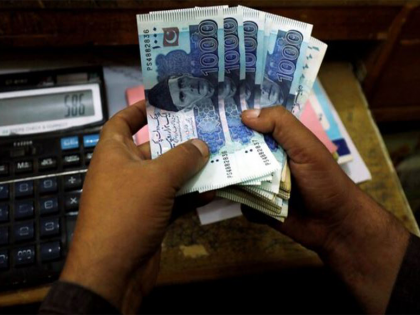Pakistan's current growth model cannot sustain 250 million population, says State Bank Governor
By ANI | Updated: November 27, 2025 18:40 IST2025-11-27T18:36:34+5:302025-11-27T18:40:13+5:30
Islamabad [Pakistan], November 27 : The Governor of the State Bank of Pakistan (SBP), Jameel Ahmad, warned that the ...

Pakistan's current growth model cannot sustain 250 million population, says State Bank Governor
Islamabad [Pakistan], November 27 : The Governor of the State Bank of Pakistan (SBP), Jameel Ahmad, warned that the country's existing economic growth model is no longer viable for a nation of 250 million people, stressing that stabilisation policies cannot continue indefinitely and must give way to long-term, sustainable reforms, The Express Tribune reported.
Speaking at the Pakistan Business Council's "Dialogue on the Economy" on Wednesday, Ahmad said Pakistan's growth trajectory had been steadily weakening for decadesfalling from an average of 3.9 per cent over 30 years to 3.5 per cent over the past two decades and further to 3.4 per cent during the last five years.
"Our business cycles are shortening and as such our current growth model simply cannot sustain a country of over 250 million people," he said, as quoted by The Express Tribune.
He added that the country's economic cycles were becoming shorter and more fragile, making the current model "neither desirable nor sustainable" for its growing population, as reported by The Express Tribune.
Ahmad's remarks came a day after Pakistan's Planning Minister Ahsan Iqbal blamed the International Monetary Fund (IMF) for Pakistan's highest unemployment rate in 21 years. Pakistan's unemployment has climbed to 7.1 per cent, while the World Bank estimates 44.7 per cent of Pakistanis now live below the poverty line.
The SBP Governor said Pakistan was caught in a prolonged phase of stabilisation that had imposed heavy burdens on citizens and businesses through steep taxes, high energy costs, and unchecked government spending. He urged policymakers and the private sector to adopt a long-term outlook instead of relying on short-term fixes.
Calling the present moment an "inflection point", Ahmad said Pakistan must shift its focus towards inclusive and sustained growth. He pressed for structural reforms and advised businesses to expand their competitiveness by integrating into global value chains, modernising production, and avoiding reliance on "shortcuts" for quick profits, as reported by The Express Tribune. Long-term stagnation, he warned, would render Pakistan globally irrelevant.
Ahmad said the central bank was committed to avoiding another boom-and-bust cycle, pointing out that monetary policy had become more forward-looking, with projections assessed for eight quarters ahead. Inflation, he said, had eased and was expected to remain in the SBP's medium-term target range of 5 per cent to 7 per cent.
The SBP chief noted that the government had delivered three consecutive years of fiscal consolidation, surpassing its primary surplus targets despite scepticism and also described the central bank's recent accumulation of foreign exchange reserves through market purchases as a "strategic" step to strengthen buffers without increasing external debt.
Ahmad highlighted that from 2015 to 2022, Pakistan's external debt nearly doubledfrom USD 55 billion to USD 100 billionwithout a corresponding rise in reserves. However, since 2022, public external debt has remained broadly unchanged while the SBP's reserves rose sharply from USD 2.9 billion to USD 14.5 billion, aided by USD 8.4 billion in market purchases during the last fiscal year, as reported by The Express Tribune.
Former SBP Governor Ishrat Husain, speaking at the same forum, said Pakistan's overall economic size is closer to USD 700 billionmuch larger than the formal USD 350 billion figureonce the informal and illicit economies are accounted for.
Disclaimer: This post has been auto-published from an agency feed without any modifications to the text and has not been reviewed by an editor
Open in app